The Mystic Seaport Museum in Connecticut is home to dozens of historic ships and boats of various kinds, gathered from around the country and the world. And since those vessels are in the water and in use, they need lots of loving and expert care from Mystic's shipwrights and maintainers.
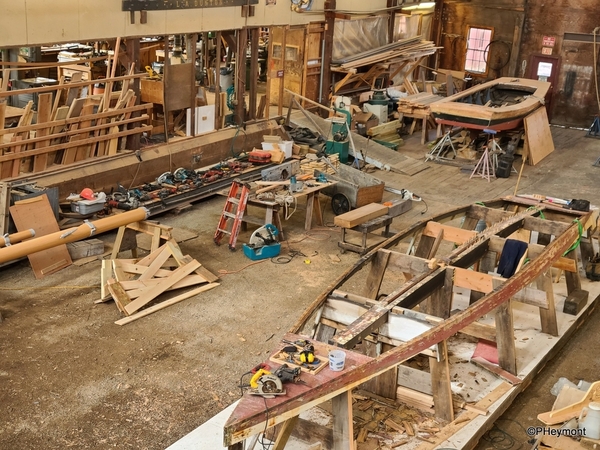
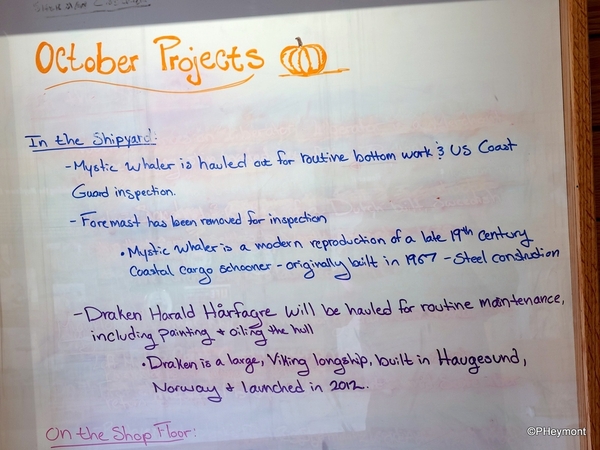
At most museums, you never get to see the back-of-the-house shops where exhibits are built and maintained, but the Henry B. duPont Preservation Shipyard is a prime exhibit itself. It's a working shipyard for working ships, and is even capable of building new 'historic' ships from scratch.
One of those, an exact recreation of Amistad, the slave ship that was seized by its captives and sailed to New England, is on exhibit at the Museum.
The shipyard officially dates to the 1950s, but it really has roots going back to the founding of the Marine Historical Association in 1929. The Association's first ship, the whaler Charles W. Morgan, was also its first restoration job.
Interestingly, the area now occupied by the Seaport was never actually a port; that was nearby. The footprint of the museum was occupied for much of the 19th century by shipbuilders who built both large and small vessels there. Now, as then, finding the right materials is an important task.

In addition to maintaining its own vessels, the Shipyard works on other ships it's almost uniquely equipped to work with. Amistad was built there; Mayflower II, a replica of the Pilgrims' ship was recently restored there. Built in 1956 in England, it's normally docked at Plymouth, Massachusetts.
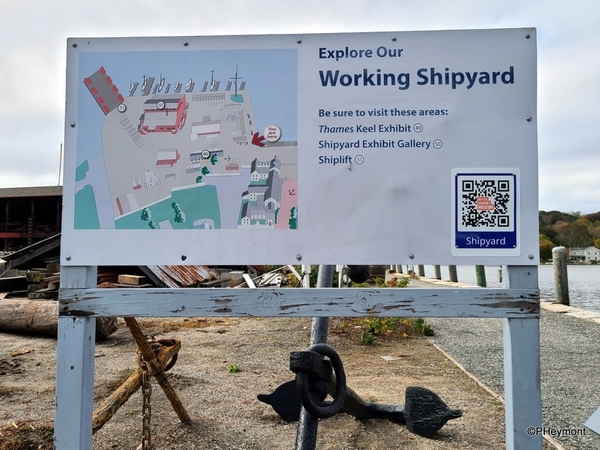
When I visited in October, the shipyard was busy on two major outdoor projects. One was an overhaul of Mystic Whaler, a classic schooner that runs cruises out of New London, Connecticut, and full maintenance of Draken Harald Harfagre, a Viking longship built in 2012 and sailed across the Atlantic.
Working on wooden ships means working with wood: gathering or buying it, cutting it to working sizes, seasoning it, cutting again to exact specifications. The Mystic shipyard has a lot, mostly stored outdoors in its sheds.
Beyond the storage areas, there are machine sheds with the equipment for turning logs and planks into ships' ribs, knees, sheathing and more.
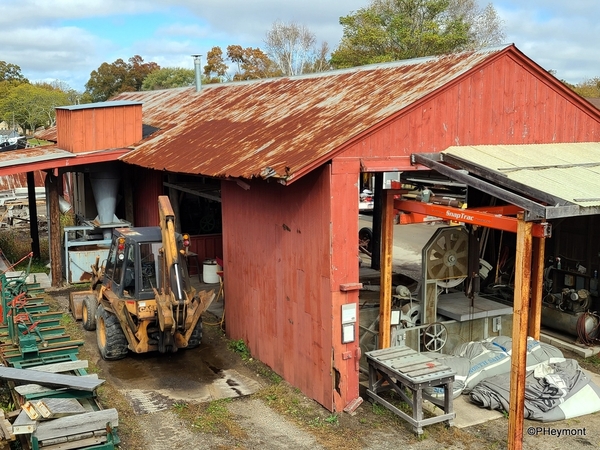
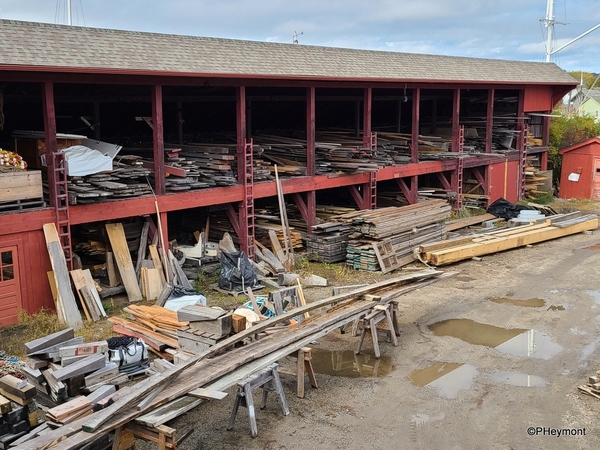
Among the most critical parts for a ship, and one that because of its size must be built from dozens to hundreds of pieces, is the keel: In essence the ship's foundation or backbone. The one below is part of the ship-building exhibit. It's 92 feet long and is from the whaleship Thames, which was scuttled at Sag Harbor, NY in 1838 after twenty years' service. The pieces were excavated and re-assembled at Mystic in 1971; the fascinating story is here.
Mystic Whaler, at left, was in the shipyard for routine maintenance, and for a Coast Guard inspection that required removal and reseating of a mast. The ship's not exactly historic: it was built in 1967 as a copy of a New England whaleship, but with significant steel where wood would have been.
Draken Harald Harfagre, or Dragon Harold Fairhair, is also a ship with less history than it looks like. It was built between 2010 and 2012, financed by a Norwegian oil and gas tycoon, and is based on the best archaeological evidence combined with still-existing living Norwegian boatbuilding traditions that can be traced to the Middle Ages.
At 115 feet long, it is "the largest Viking ship built in modern times." In the time it's modeled on, it would have been an average sized warship, capable of sailing across the Atlantic, or being maneuvered sharply in combat with other ships by a hundred rowers pulling fifty oars. Under sail, it would have had a crew of about thirty. In the 13th century, Norwegian provinces were required to provide 116 ships this size to the country.
At the shipyard, it sits on a wheeled carriage which sits on railroad-like tracks. In the picture below, at the center right, you can see where the track changes. That's the point where the shipyard's pride and joy begins: the shiplift. The section at the right is actually an elevator that drops into the harbor; the ship is floated into the slip and onto the cradle and once stabilized in place, lifted up to land level and rolled to its place in the yard.
The weather was cold when I visited, and Covid limited access to many areas but it was still an enjoyable visit. And next time, I'll be spending more time 'down at the yard.'

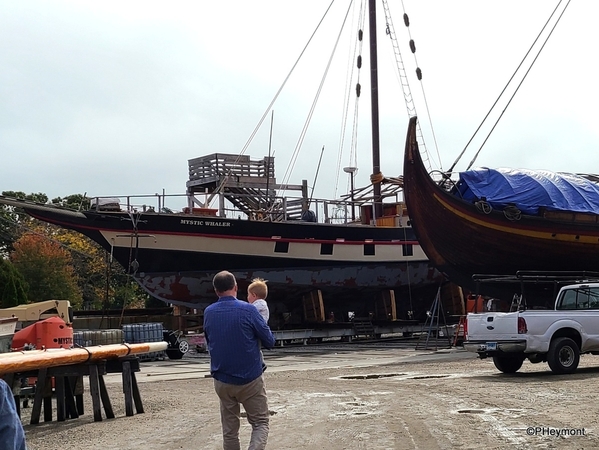
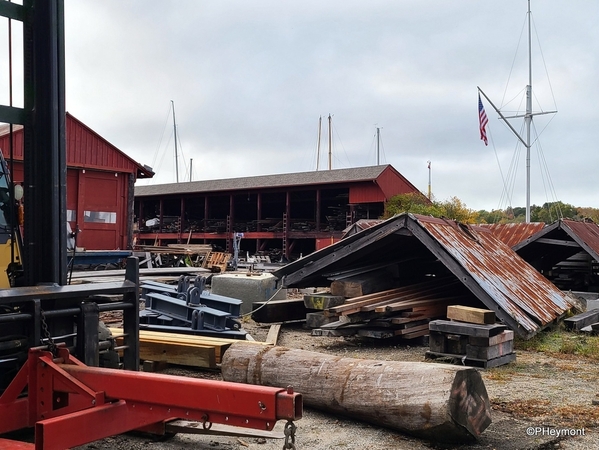
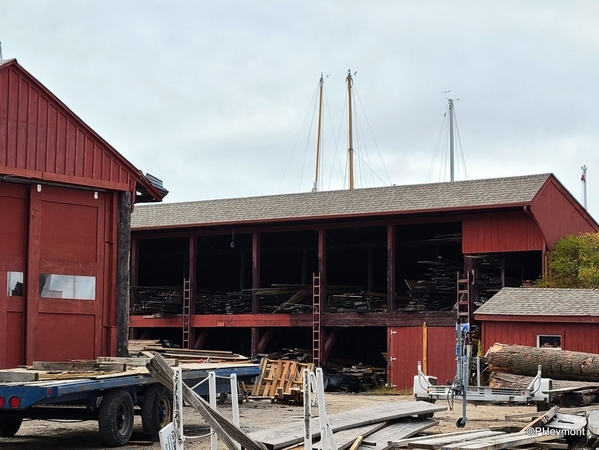
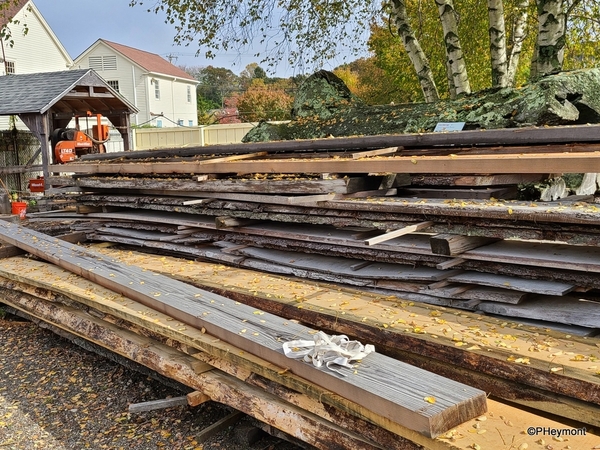
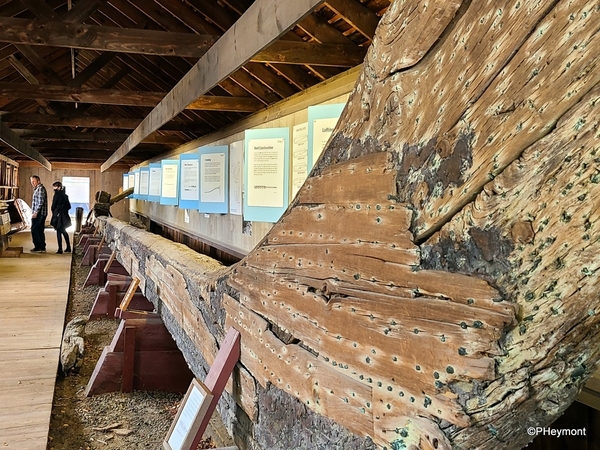
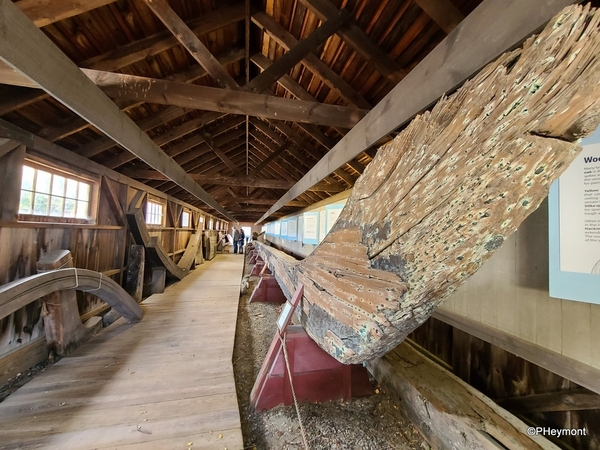
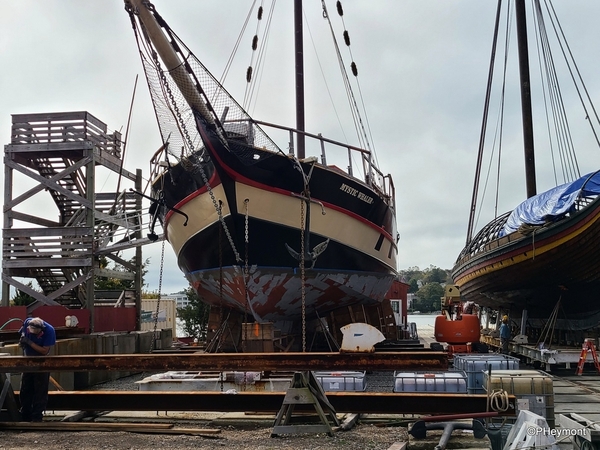
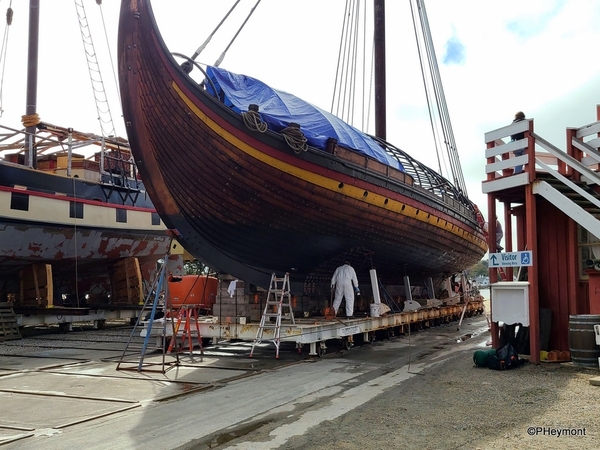
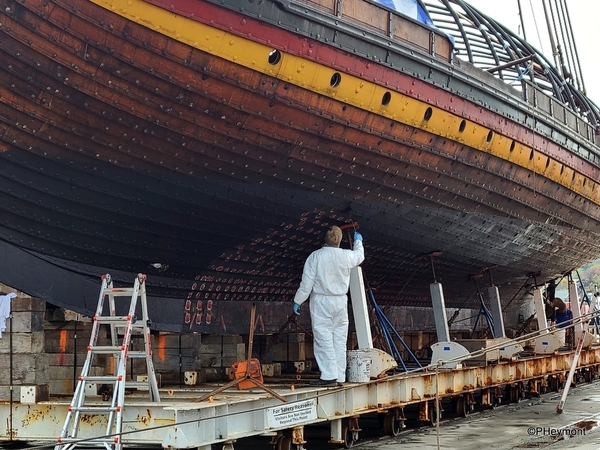
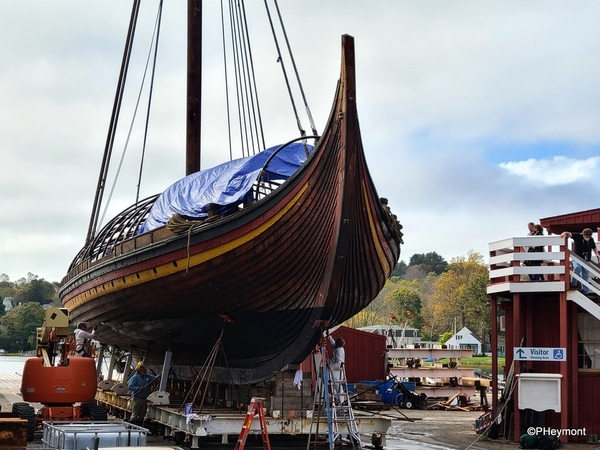
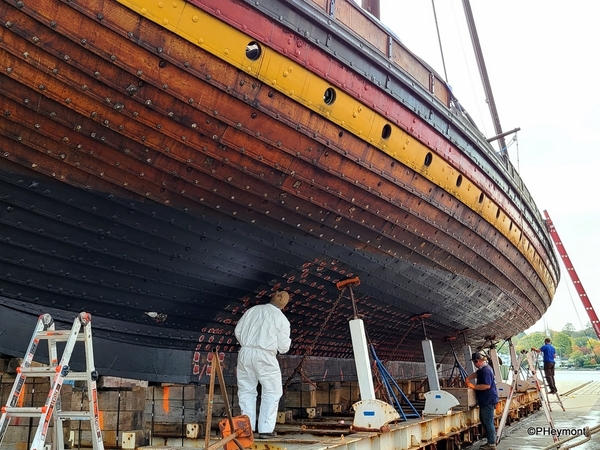
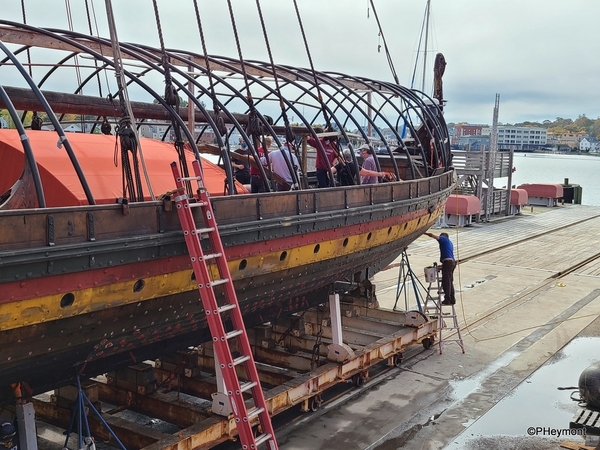
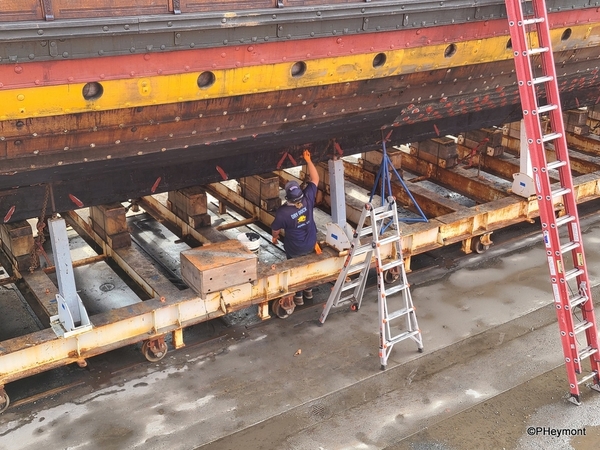




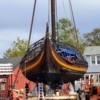











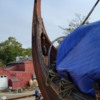




Comments (0)